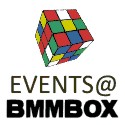YAHOO: The word invented by Jonathan Swift, used in his book Gulliver’s Travels represents a person who is repulsive in appearance and action and is barely human. Yahoo! founders Jerry Yang and David Filo selected the name in January 1994 because they considered themselves yahoos.
XEROX: The Greek root “xer” means dry. The inventor, Chestor Carlson, named his product Xerox as it was dry copying, markedly different from the then prevailing wet copying. The term Xerox also explains the copying process which is called xerography or electro photography.
SONY: The name “Sony” was chosen for the brand as a mix of the Latin word Sony or son(us) and also a little boy sonny, which is the root of sonic and sound as well as familiar word of everybody called a boy. In February 1955, the company name changed to Sony in January 1958.
ORACLE: Larry Ellison and Bob Oats were working on a consulting project for the Central Intelligence Agency (CIA). The code name for the project was called Oracle (the CIA saw this as the system to give answers to all questions or something such).
MOTOROLA: Founder Paul Galvin came up with this name when his company started manufacturing radios for cars. The popular radio company at the time was called Victrola.
INTEL: Bob Noyce and Gordon Moore wanted to name their new company ‘Moore Noyce’ but that was already trademarked by a hotel chain, so they had to settle for an acronym of INTegrated ELectronics.
APPLE: Favourite fruit of founder Steve Jobs. He was three months late in filing a name for the business, and he threatened to call his company Apple Computers if the other colleagues didn’t suggest a better name by 5 o’clock.
ADOBE: Adobe was founded in December 1982 by John Warnock and Charles Geschke The name came from the river Adobe Creek that ran behind the house of founder. Adobe managed to acquire its former competitor; Macromedia, in December 2005.
CISCO SYSTEMS: The name is not an acronym but an abbreviation of San Francisco. The company’s logo reflects its San Francisco name heritage. It represents a stylized Golden Gate Bridge.
GOOGLE: The name started as a jockey boast about the amount of information the search-engine would be able to search. It was originally named ‘Googol’, a word for the number represented by 1 followed by 100 zeros. After founders – Stanford graduate students Sergey Brin and Larry Page presented their project to an angel investor, they received a cheque made out to ‘Google’.
ALFA ROMEO: Alfa Romeo hails back to the city arms of Milan and the 12th century bishop who bestowed them.
BMW: BMW’s circle with blue and white quadrants is an interpretation of the image of a spinning propeller, powerfully simple as an early airline poster and suggesting the company’s beginnings in building aircraft engines.
FERRARI: Ferrari’s rearing stallion has roots in insignia of World War I Italian fighter. Citroen’s chevrons come from stylized gear teeth.
MAYBACH: In reviving the super luxury Maybach brand of the 1920s, when it was favoured by maharajas and marquis, Mercedes updated an almost Wiener Secession looking “M.”
PORSCHE: Porsche borrowed arms from the city of Stuttgart, where it located its headquarters.
MERCEDES: Mercedes tri star, the story goes, was inspired by a star Gottlieb Daimler penned on a post card of Cologne, marking where he was living and sent to his children.
JEEP: Jeep, originated from General Purpose, rolled out what the company called its first logo, “A graphic representation of the front grille and windshield of the Wrangler, the icon of the Jeep brand depicts the strong styling cues of the Wrangler, the seven-slot grille, round headlights and rectangular windshield.
FIAT: In the 1980s Fiat supplanted its pre war, wreathed emblem in favour of a Scrabble piece letter logo. The story goes that Fiat design chief Mario Maioli was driving past the company’s Mirafiori factory one night in 1982 during a power outage. He noted a neon sign outlined against the dark sky, bearing the letters FIAT and was inspired to sketch a new logo.
CHEVROLET: The Bowtie logo was inspired by the wallpaper at the hotel where William Durant, the General Motors founder stayed back in 1907. Durant envisioned the bowtie design as symbolizing “The Heartbeat of America.
CADILLAC: The original Cadillac logo is based on the family crest of the man for whom the company was named, the Gascon officer and minor aristocrat who founded Detroit in 1701-Antoine de La Mothe, Sieur de Cadillac.
AUDI: Audi’s four rings represent the juncture of four earlier German auto companies in 1932. Horch, DKW, Wanderer and Audi were forced to ally by depressed market conditions to form Auto Union. After the war, the company finally took the name Audi which is Latin for “I hear,” but kept the Auto Union rings.
SAP: “Systems, Applications, Products in Data Processing”, formed by four ex-IBM employees who used to work in the ‘Systems/Applications/Projects’ group of IBM.
MICROSOFT: It was coined by Bill Gates to represent the company that was devoted to MICROcomputer SOFTware. Originally christened Micro-Soft, the ‘-’ was removed later on.
LOTUS: Mitch Kapor got the name for his company from the lotus position or ‘padmasana.’ Kapor used to be a teacher of Transcendental Meditation of Maharishi Mahesh Yogi.
HP: Bill Hewlett and Dave Packard tossed a coin to decide whether the company they founded would be called Hewlett-Packard or Packard-Hewlett.
APACHE: It got its name because its founders got started by applying patches to code written for NCSA’s http daemon. The result was ‘A PAtCHy’ server – thus, the name Apache.
ASTON MARTIN: In 1913, Lionel Martin and Robert Bamford founded a company that later would become Aston Martin. At the time, Martin & Bamford Limited produced Singers racing cars, but the duo wanted to create a more sophisticated model of their own. They named their first car Aston Martin after the founder Lionel Martin and the Aston Clinton hill climb racing course where their Singers car had won previously.
CAPTAIN MORGAN: It is a brand of rum produced by Diageo. It is named after the 17th-century Caribbean privateer from Wales, Sir Henry Morgan.
JOHNNIE WALKER: It is a brand of Scotch whisky produced in Kilmarnock, Ayrshire, Scotland, and UK. Originally known as Walker’s Kill me Whisky, the Johnnie Walker brand is a legacy left by John ‘Johnnie’ Walker after he started to sell whisky in his grocer’s shop in Ayrshire, Scotland.
CAMPARI: It was invented by Gaspare Campari between 1862 and 1867. Campari is obtained from the infusion of bitter and aromatic herbs, plants and fruit in alcohol and water. The history of Campari began in Novara, Italy, in 1860, with the invention by Gaspare Campari of the recipe that is still in use today.
– Gargi Waghdhare –









